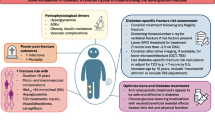Summary
Osteoporosis is a prevalent disease, which can cause considerable morbidity due to osteoporotic fractures. Knowledge of the cause of osteoporotic bone loss would help implementation of the appropriate treatment. There are two pathogenic mechanisms involved in the development of osteoporosis: ¶1) achievement of a relatively low peak bone density in young adulthood which increases the risk of osteoporosis because only a modest bone loss later in life results in bone densities in the osteoporotic range, and 2) a rapid bone loss rate at menopause and/or later in life. Most patients exhibiting osteoporosis have some combination of these two pathogenic mechanisms. There are basically two causes for osteoporosis: 1) a normal peak bone mass with rapid bone loss, and 2) low peak bone mass with a normal bone loss rate. Proper management of osteoporosis involves early diagnosis of the disease and appropriate treatments. With respect to diagnosis of osteoporosis, we now have two important diagnostic tools: a) instruments that measure bone density with high precision, and b) serum and urine biochemical markers of bone formation and resorption assays that allows rapid and frequent monitoring of bone turnover rates. Bone density measurements allow the diagnosis of osteoporosis before fractures occur. Biomarkers can identify patients with a high bone turnover, a situation that leads to rapid bone loss. These two diagnostic tools together can help identify osteoporosis in its earliest form so that preventative measures can be instituted. With respect to treatment of osteoporosis, we now have several forms of effective therapies, such as estrogens, bisphosphonates, calcitonins, and vitamin D (and/or active vitamin D metabolites), that are approved for the use in the prevention and/or treatment of osteoporosis. Consequently, most patients with osteoporosis can now be treated with effective therapies that will have a positive impact on the disease.
Similar content being viewed by others
Author information
Authors and Affiliations
Rights and permissions
About this article
Cite this article
Baylink, D., Lau, KH. The diagnosis and management of osteoporosis. Z Rheumatol 59 (Suppl 1), I42–I44 (2000). https://doi.org/10.1007/s003930070038
Published:
Issue Date:
DOI: https://doi.org/10.1007/s003930070038




